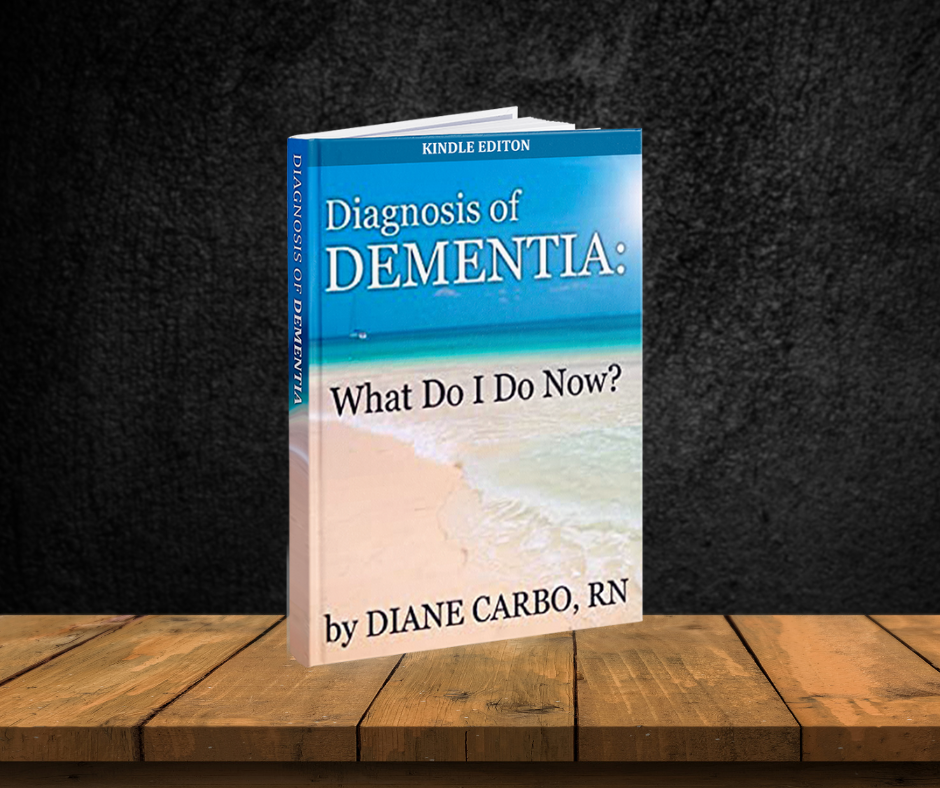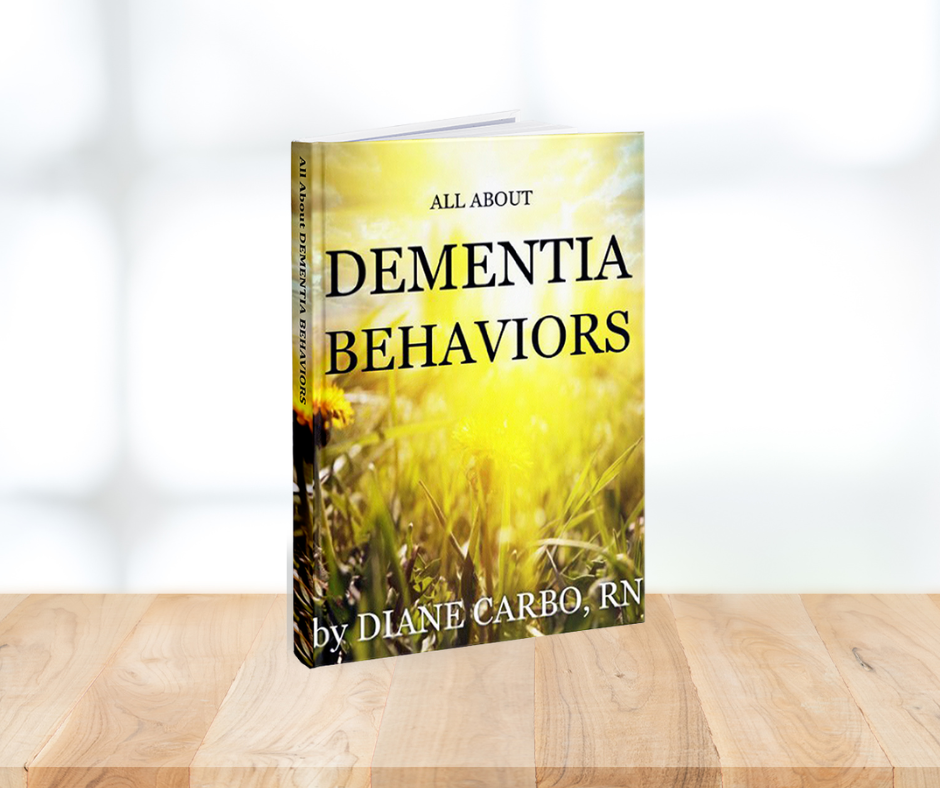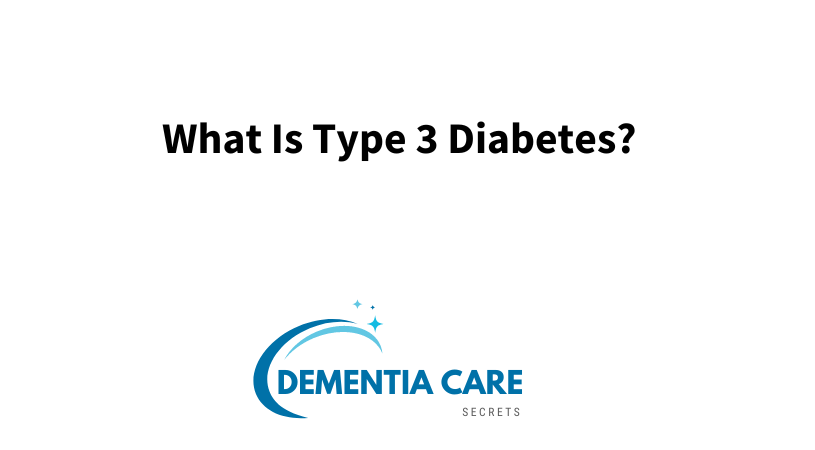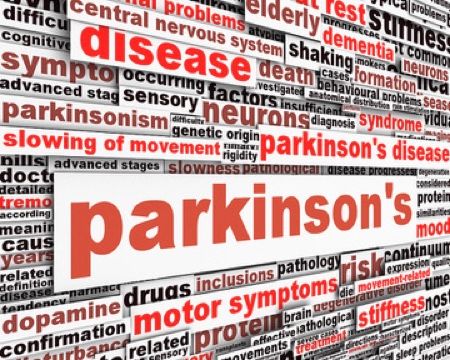Can You Have Mixed Dementia: Alzheimer's and Lewy Body Dementia?
Discover whether it's possible to have mixed dementia, specifically a combination of Alzheimer's and Lewy body dementia. This insightful guide explores symptoms, diagnosis, and treatment options to help caregivers and families better understand this complex condition.

Introduction
This guide will explore the similarities and differences between Alzheimer’s disease and Lewy body dementia. It offers an overview of each condition, detailing the causes, symptoms, diagnosis, treatment and prognosis, to help educate readers on the two types of dementia. The Alzheimer's Association is a key resource for information, education, and support for those affected by Alzheimer's and other types of dementia.
Alzheimer’s disease is the most common type of dementia. It is a progressive disease which slowly destroys mental abilities over time. Lewy body dementia is a related type of dementia with many of the same symptoms, but the underlying cause is different.
In this guide, we will look at the causes, symptoms, diagnosis, treatments, and prognosis of both Alzheimer’s disease and Lewy body dementia in detail. We will then compare and contrast the two conditions, helping readers understand the different aspects of each one.
If you or a family member have been diagnosed with dementia, may ask What Do I do now? Let us help you know the steps to take in the early stages of your disease process

What is Alzheimer's Disease?
Alzheimer's disease is an irreversible, progressive brain disorder that slowly destroys memory and thinking skills, and eventually, the ability to carry out the simplest tasks. It is the most common cause of dementia, affecting an estimated 5.8 million Americans.
Here's a comprehensive guide to learning more about Alzheimer's disease.
What Causes Alzheimer's? Risk Factors
The exact cause of Alzheimer’s disease is unknown, though there are several contributing factors. One of the factors is age-related changes in the brain, which lead to a buildup of certain proteins called beta-amyloid plaques and neurofibrillary tangles. This buildup of proteins, along with damaged blood vessels supplying the brain, can damage or destroy neurons, leading to cell death and shrinking of the brain.
Signs and Symptoms of Alzheimer's
Symptoms of Alzheimer's disease vary from person to person, but generally include:
- Memory loss and confusion
- Difficulty solving problems or making decisions
- Poor judgement and disorientation
- Changes in mood or behavior
- Difficulty speaking, swallowing or walking
Diagnosing Alzheimer's
Alzheimer's disease is typically diagnosed by a combination of clinical tests and diagnostic processes. These include structural imaging, laboratory tests, and neuropsychological assessments.
Structural imaging includes methods such as magnetic resonance imaging (MRI), positron emission tomography (PET), and computed tomography (CT) scans. These help to identify any irregularities with the brain structure, such as evidence of atrophy or the development of plaques.
Laboratory tests involve testing your blood for certain chemicals that can indicate the presence of Alzheimer's. These can include amyloid-beta, tau, and other markers.
Neuropsychological assessments are used to evaluate thinking, memory, and other cognitive functions. They are often used to determine if there has been a decline in cognitive abilities compared to previous levels.
In some cases, a lumbar puncture may also be used to measure levels of spinal fluid, which can provide further indication of the presence of Alzheimer's.
Here's a video explaining What is Lewy Body Dementia? A must see to help you understand this challenging disease.
Detail the Cause and Symptoms of Lewy Body Dementia
Lewy Body Dementia (LBD) is a progressive neurological disorder caused by the build-up of Lewy bodies in the brain. Lewy bodies are deposits of a protein that form in nerve cells and can cause communication problems within the brain. This build-up of proteins interferes with the normal functioning of the brain, leading to symptoms such as memory impairment, dementia, movement disorders, visual hallucinations, depression, and anxiety.
LBD can occur alongside other types of dementia, such as Parkinson's disease dementia, complicating diagnosis and treatment.
It is diagnosed using a combination of neurologic and neuropsychiatric tests, lab results, imaging studies, and a clinical evaluation. Common signs and symptoms of LBD include:
- Memory loss and confusion
- Movement problems which may include rigidity, tremors, and changes in gait or posture
- Psychiatric issues such as depression, anxiety, hallucinations, paranoia and delusions
- Changes in behavior
LBD is a progressive disease and symptoms can fluctuate between periods of clarity and confusion. It is important to remember that LBD is a complex condition and what works for one person may not work for another.
Comparing Alzheimer's, Lewy Body Dementia, and Vascular Dementia
Alzheimer's and Lewy body dementia are two different types of dementia. While many of the symptoms may be similar, there are some important differences between the two. To understand the differences between Alzheimer's dementia and Lewy body dementia, we must first look at the pathology, clinical signs/symptoms, and diagnosis of each.
Pathology
Alzheimer’s is a neurodegenerative disease and is caused by abnormal deposits in the dementia-related brain of an enzyme called amyloid beta. These deposits form plaques that build up over time and damage surrounding tissues, causing cognitive decline. Lewy body dementia is also caused by abnormal deposits in the dementia-related brain, but these deposits are made up of a protein called alpha-synuclein. Both diseases lead to nerve cell death and cognitive decline, but the way in which they damage the brain is different.
Clinical Signs/Symptoms
Both Alzheimer's and Lewy body dementia have similar clinical signs and symptoms, such as memory loss, confusion and difficulty thinking. However, Lewy body dementia usually has more pronounced and rapid motor control issues, such as akinesia, rigidity, and tremors, all of which can lead to a decrease in the ability to carry out activities of daily living. With Alzheimer's, language problems, such as difficulty finding words and decreased fluency, tend to be more prevalent.
Diagnosis
The diagnosis of both Alzheimer's and Lewy body dementia involve a detailed neurological exam, patient history, and laboratory tests. Structural imaging, such as a CT or MRI, is also used to assess structural changes in the brain. Neuropsychological assessments are also performed to evaluate cognitive functioning. In diagnosing Lewy body dementia, additional tests may be done to check for dopamine receptors as this can help differentiate between the two dementias.
Alzheimer's, Lewy Body Dementia, and Parkinson's Disease Dementia Overlap
Alzheimer’s and Lewy body dementia are two types of progressive brain diseases. Although they both cause similar symptoms, there are some key differences between the two. It is not uncommon for a person to have features of both Alzheimer’s and Lewy body dementia, though this can be difficult to diagnose correctly. A mixed dementia diagnosis involves symptoms of multiple types of dementia and can be challenging due to overlapping symptoms.
When someone has both Alzheimer’s and Lewy body dementia, it is commonly referred to as “mixed dementia”. The overlap between the two diseases can lead to more complex diagnoses and treatments, so it’s important for healthcare professionals to look for signs of both diseases when diagnosing someone.
As both Alzheimer’s and Lewy body dementia tend to cause similar symptoms, such as memory loss and confusion, it can be difficult to tell them apart. Some key differences to look out for are:
- Alzheimer’s is marked by amyloid plaques, which are sticky deposits in the brain which can destroy brain cells. Lewy body dementia is characterised by Lewy bodies, abnormal protein deposits in the brain.
- People with Alzheimer’s often experience language problems and struggle to process visual information, whereas people with Lewy body dementia may have hallucinations and changes in alertness or movement.
- Tests such as MRI scans, CT scans and PET scans can help diagnose Alzheimer’s, whereas Lewy body dementia is typically diagnosed through a comprehensive evaluation of a person’s medical history.
It is not always easy to tell the difference between Alzheimer’s and Lewy body dementia, especially when they co-exist. Therefore, it is important to get an accurate diagnosis from a qualified healthcare professional who can provide advice on the best treatment options.
Want more information on the many types of dementia? Check out our Dementia Care Secrets podcast

What is Mixed Dementia?
Definition and Explanation
Mixed dementia is a multifaceted condition where an individual exhibits symptoms of more than one type of dementia simultaneously. The most prevalent form of mixed dementia involves the combination of Alzheimer’s disease and vascular dementia. However, other combinations, such as Alzheimer’s disease with Lewy body dementia or vascular dementia with frontotemporal dementia, can also occur. This overlap can complicate diagnosis and treatment, as the symptoms of different dementias often intersect. Understanding the risk factors, such as age, cardiovascular disease, and high blood pressure, is crucial in managing and potentially mitigating the impact of mixed dementia.
Types of Mixed Dementia
Alzheimer’s Disease with Lewy Body Dementia
One common type of mixed dementia is the coexistence of Alzheimer’s disease and Lewy body dementia. Lewy body dementia is characterized by the presence of abnormal protein deposits known as Lewy bodies in the brain. When these Lewy bodies are present alongside the amyloid plaques and neurofibrillary tangles of Alzheimer’s disease, the result can be a more rapid and severe decline in cognitive function. Individuals with this type of mixed dementia may experience a combination of symptoms, including memory loss, hallucinations, delusions, and significant fluctuations in cognitive abilities. The presence of Lewy bodies can exacerbate the typical symptoms of Alzheimer’s, making management and treatment more challenging.
Treatment of Alzheimer's
When it comes to managing Alzheimer's disease, medication and psychosocial interventions are the most common methods used. The goal of treatment is to help maintain function and manage symptoms as much as possible. Medications can help reduce the rate of decline in cognitive and physical abilities, but they do not cure the disease.
The two main types of medications used to treat Alzheimer's are cholinesterase inhibitors and memantine. Cholinesterase inhibitors help regulate a neurotransmitter in the brain called acetylcholine, which is involved in memory, thinking, and communication. Memantine helps regulate the levels of glutamate, another neurotransmitter that is related to memory and learning.
In addition to medications, psychosocial interventions are also important for those living with Alzheimer's. Psychosocial interventions involve activities, such as reminiscence therapy, where individuals can talk about important life events and recall memories that they may have forgotten. Other intervention techniques include behavior modification, cognitive retraining, and environmental modifications that can help create a more supportive living environment.
Finally, it is important to note that there are other therapies that can be used to help manage Alzheimer's. These include nutritional therapy, music therapy, exercise, and social stimulation. All of these therapies can help individuals live a higher quality of life with Alzheimer's.
Treatment of Lewy Body Dementia
Lewy Body Dementia (LBD) can be challenging to treat; however, there are a variety of resources and interventions available that may help manage the symptoms. Medications used to treat LBD will focus on the particular symptoms being experienced, such as psychosis, sleeplessness, digestive issues, and movement disturbances. Psychosocial treatments, such as cognitive behavioral therapy, may be helpful in managing disruptive behaviors. Other therapies, such as music or art therapy, may also be beneficial. Lewy body disease can occur alongside other types of dementia, making treatment more complex.
Medications: Depending on the symptoms being experienced, medications may be prescribed to help manage those specific symptoms. For example, antipsychotic medications may be prescribed to help manage delusions, hallucinations, or other forms of psychosis that are common in people with LBD. Antidepressants and cholinesterase inhibitors may also be prescribed to help with mood disturbances and memory impairment. Medicines, such as levodopa, may also be used to help manage movement problems.
Psychosocial Treatments: Cognitive Behavioral Therapy (CBT) has been found to be effective in treating disruptive behaviors in people living with LBD. CBT focuses on understanding and modifying dysfunctional thoughts and behaviors. Counselling and support groups are also beneficial for managing emotional difficulties and providing social support.
Other Therapies: Music therapy has been found to be particularly helpful in managing symptoms of LBD. Music therapy uses singing, playing an instrument, or even just listening to music to evoke feelings of joy and relaxation. Art therapy is another form of psychotherapy that involves the use of artistic expression to explore emotions and experiences.
The Prognosis of Alzheimer's
Alzheimer’s is a progressive and degenerative condition, meaning that it gets worse over time with deterioration of the memory and thinking abilities. While there isn’t currently a cure for Alzheimer’s, there are treatments available to help manage some of the symptoms and slow down the progression of the disease. The main risk factors for mixed dementia include older age, gender, and possibly low blood flow to the brain.
Common complications associated with Alzheimer’s include an increased risk of falls due to mobility issues, confusion and disorientation, changes in behavior, difficulties with communication, and problems with swallowing. Over time, the symptoms can worsen and may lead to complications such as stroke, pneumonia, and other medical conditions. In some cases, these can be fatal.
Most people with Alzheimer’s can expect a shortened life expectancy, typically by six to eight years. However, the rate of decline varies greatly from person to person and can depend on other factors such as age and overall health. It is important to note that while Alzheimer’s is irreversible, taking steps to manage the disease can help reduce the chances of experiencing severe complications or accelerated progression.
Outline the Likely Prognosis of Lewy Body Dementia
Lewy body dementia is considered a progressive disorder, meaning that symptoms will continue to worsen over time. Unfortunately, there is currently no cure for Lewy body dementia and treatment focuses on managing symptoms. In some cases, people with Lewy body dementia may not experience significant decline, but most people progress over time. Vascular disease is a significant component of mixed dementia, and managing it through medications can aid in slowing its progression.
The rate of progression of Lewy body dementia can vary from person to person, with some experiencing rapid decline while others may have a more gradual decline. Generally, the average life expectancy for someone with Lewy body dementia is between three and nine years from the time of diagnosis.
The most common complications associated with Lewy body dementia include falls, respiratory illness, or other infections that can cause further health complications. Additionally, people with Lewy body dementia are at an increased risk for depression and behavioral issues such as agitation, aggression, and psychosis. It is important to monitor for these issues and seek medical attention if needed.
Have a family member with dementia? Are you prepared to handle challenging behaviors? Be prepared and read this book.

Living with Mixed Dementia
Staying Healthy and Engaged
Living with mixed dementia requires a holistic approach to manage symptoms and slow disease progression. Here are some strategies to help maintain quality of life:
- Exercise Regularly: Engaging in physical activity can help reduce the risk of cardiovascular disease, a major risk factor for vascular dementia. Activities like walking, swimming, or yoga can improve overall health and well-being.
- Eat a Healthy Diet: A balanced diet rich in fruits, vegetables, and whole grains supports brain health. Foods high in antioxidants, omega-3 fatty acids, and vitamins can be particularly beneficial.
- Stay Socially Engaged: Social interaction can alleviate stress and improve mood. Participating in group activities, joining clubs, or simply spending time with friends and family can be very beneficial.
- Manage Stress: Chronic stress can worsen dementia symptoms. Techniques such as meditation, yoga, or deep breathing exercises can help manage stress levels.
- Stay Mentally Active: Keeping the brain engaged through activities like reading, puzzles, or learning new skills can help maintain cognitive function.
- Get Enough Sleep: Poor sleep can exacerbate dementia symptoms. Establishing a regular sleep schedule and creating a restful environment can improve sleep quality.
Working closely with healthcare providers to develop a personalized management plan is essential. With the right approach, it’s possible to slow the progression of mixed dementia and maintain a higher quality of life.
Summarizing the Key Points
When it comes to Alzheimer's and Lewy body dementia, there are some major similarities and differences between the two. Here is a brief overview of the key points to keep in mind:
- Both Alzheimer's and Lewy body dementia have similar signs and symptoms, such as memory loss, confusion, and difficulty with language and communication.
- Alzheimer's is caused by the accumulation of the protein amyloid beta in the brain, while Lewy body dementia is caused by the accumulation of alpha-synuclein protein and neurofibrillary tangles in the brain.
- Diagnosis of Alzheimer's is done through a combination of structural imaging, lab tests, and neuropsychological assessments, while diagnosis of Lewy body dementia is done based on clinical criteria.
- Treatment of both Alzheimer's and Lewy body dementia involve medications, psychosocial interventions, and other therapies.
- The prognosis for both diseases is variable, but complications for both can include falls, immobility, and behavior changes.
- Alzheimer's and Lewy body dementia can coexist and they may need to be differentiated in order to provide effective treatment.
Conclusion
It is important to remember that Alzheimer's and Lewy body dementia are both serious, progressive diseases, but they can both be managed with effective treatment. With a combination of medical intervention, psychosocial interventions, and other therapies, those affected by these dementias can find ways to cope and continue to live fulfilling, meaningful lives.
You might also like this article:











